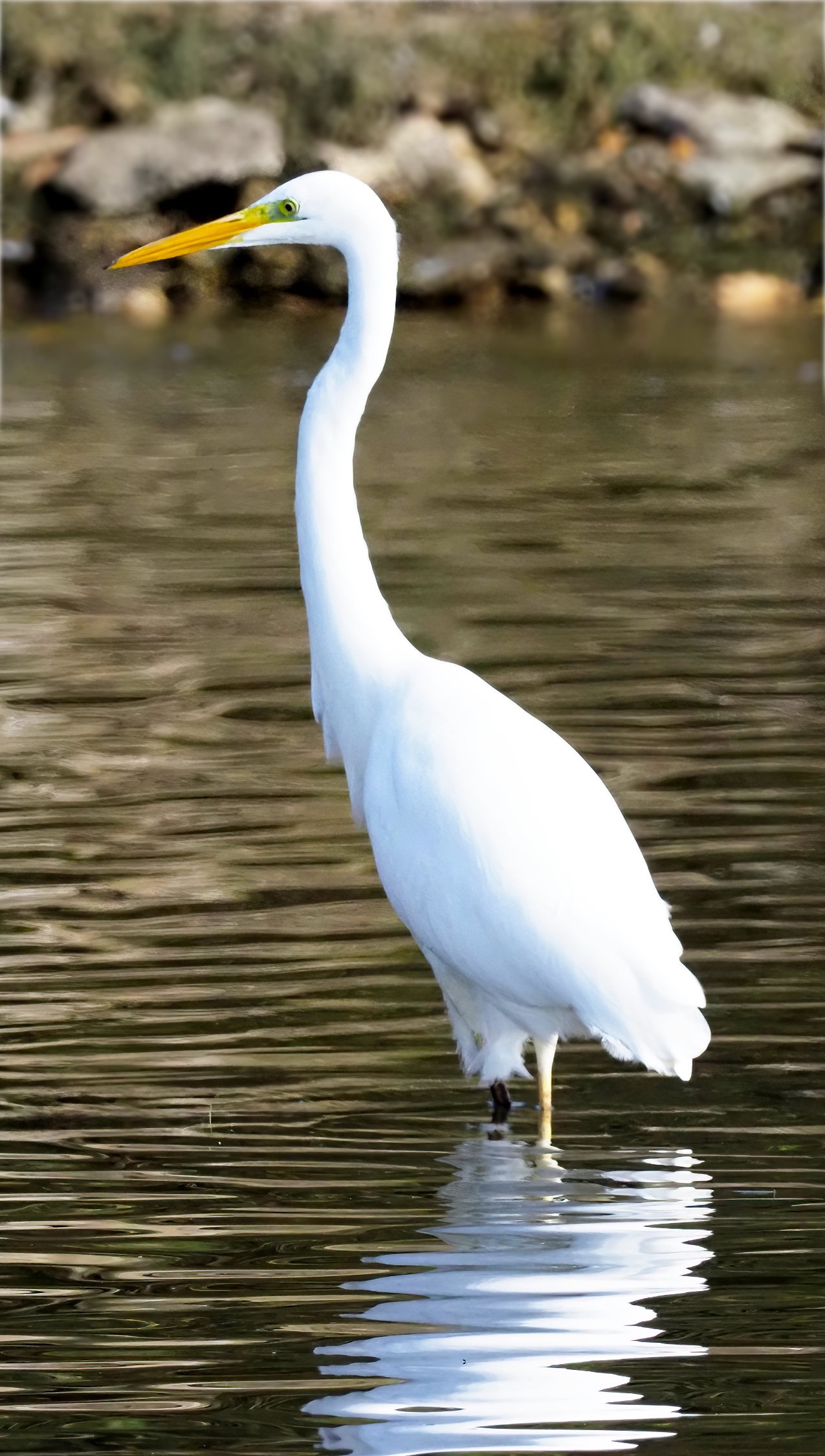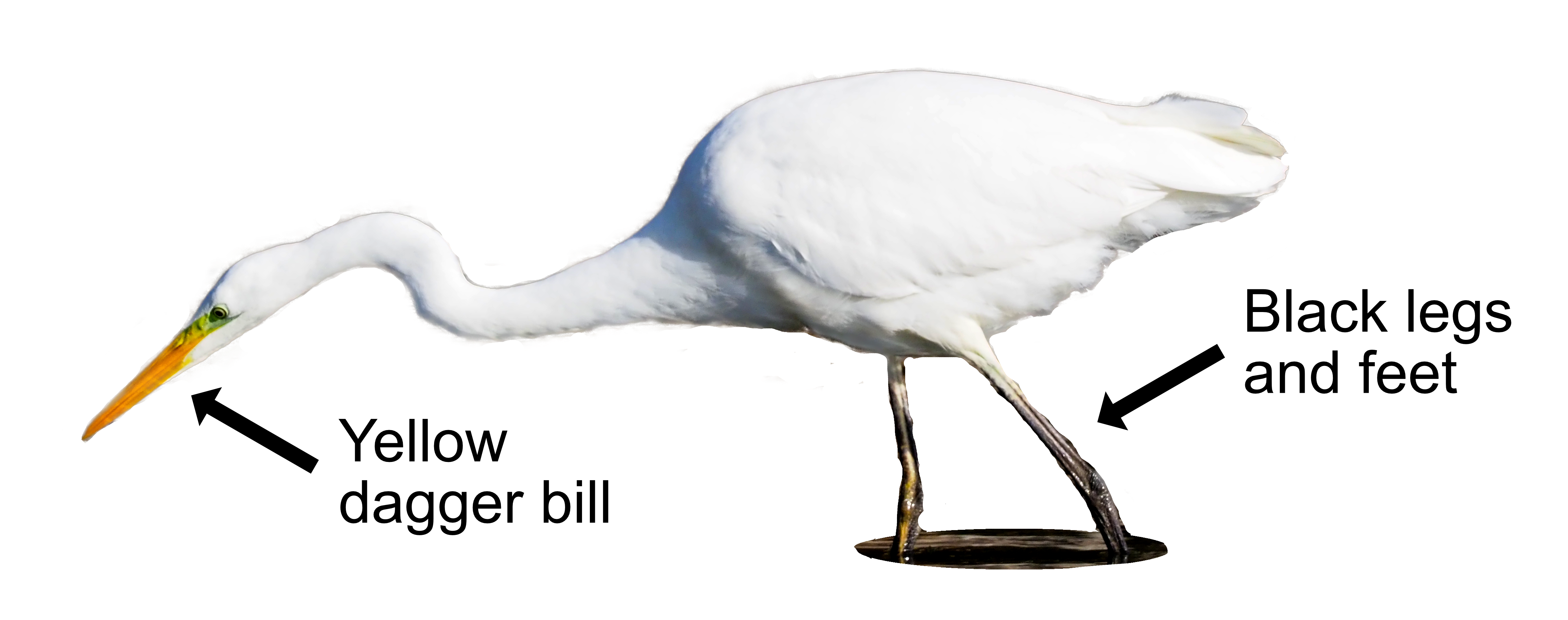
The Great White Egret, often just called a Great Egret, is a recent newcomer to Britain though spreading rapidly. It is found on wet meadows and lakes and is mainly a winter visitor. As its name suggests, the Great White Egret is a large, white heron. They can look similar to Little Egrets, but they are much, much bigger.
The Great White Egret is similar in size to a Grey Heron. It is all white with black legs and feet, and a long yellow dagger bill. Confusingly, they can have a black bill when breeding. Like the Little Egret, they have wispy breeding plumes over their back, but as it mainly breeds elsewhere, we rarely see these. The flight is slow and ponderous with their necks retracted. This is characteristic of Herons and Bitterns and makes them easy to tell apart from Storks, Cranes, and Spoonbills, which stick their necks out. The rarely heard call is a rippling, deep rattling “brrrrrr”.
Their main food is fish, insects and frogs. They stand in shallow water, patiently waiting for a meal to approach, then spear it with their long, sharp bill.
The Somerset Levels were home to the UK’s first breeding pair of Great White Egrets in 2012, though they mainly breed in colonies elsewhere. The nests are made in trees close to a large lake with reedbeds or other large wetlands.

They don’t start breeding until they are 2–3 years old and form a monogamous pair each season. The male selects a suitable tree, starts a nest, and then uses it to attract a female. The nest is made of sticks and lined with plant material and can be up to 3 feet across! Up to six bluish-green eggs are carefully laid and both parents incubate the eggs for 23–26 days. Once hatched, mum and dad feed the youngsters by regurgitating (sicking up) food. They can fly after 6–7 weeks, no doubt relieved to be able to feed themselves and leave the tree.
Great White Egrets can appear in almost any part of the UK, though they are most frequently found in southeast England and East Anglia. About 200 overwinter here. Like the Little Egret, the Great White Egret was once persecuted for its beautiful long-white breeding plumes, which were used in ladies’ hats. In the United States, they were almost wiped out completely during the late 1800s. Those dastardly Victorians!
Their Latin name is ’ardrea alba’ where ’ardea’ is Latin for ‘heron’ and ’alba’ is ‘white’. It has several local names such as ‘common egret’, ‘large egret’, or ‘great white heron’. They are found throughout the world with four subspecies in Asia, Africa, the Americas, and Europe.